Have you ever watched a video that left you feeling bored or disinterested? Perhaps the content was great, but the delivery lacked creativity and engagement. That’s where video scriptwriting comes in. A well-crafted video script can make all the difference in capturing your audience’s attention and leaving a lasting impression.
In this beginner’s guide, we’ll take you through the process of writing a compelling video script that engages your audience. We’ll cover everything from understanding your audience to incorporating visual elements and editing your script. Let’s dive in!
Understanding Your Audience

Before you begin writing your video script, it’s essential to understand your audience. Who are they? What are their interests and needs? By answering these questions, you can create a video that speaks directly to your target audience.
One effective way to understand your audience is by creating personas. Personas are fictional representations of your target audience that help you better understand their motivations, challenges, and goals. For instance, if you’re creating a video for a beauty brand, you may create personas for a young professional who values convenience and a stay-at-home mom who prioritizes natural ingredients.
Analyzing your audience’s needs and interests is equally important. If your audience is interested in learning about skincare, your video could focus on the benefits of a particular product or routine. On the other hand, if your audience is looking for entertainment, your video could be more lighthearted and humorous.
Setting Your Objectives
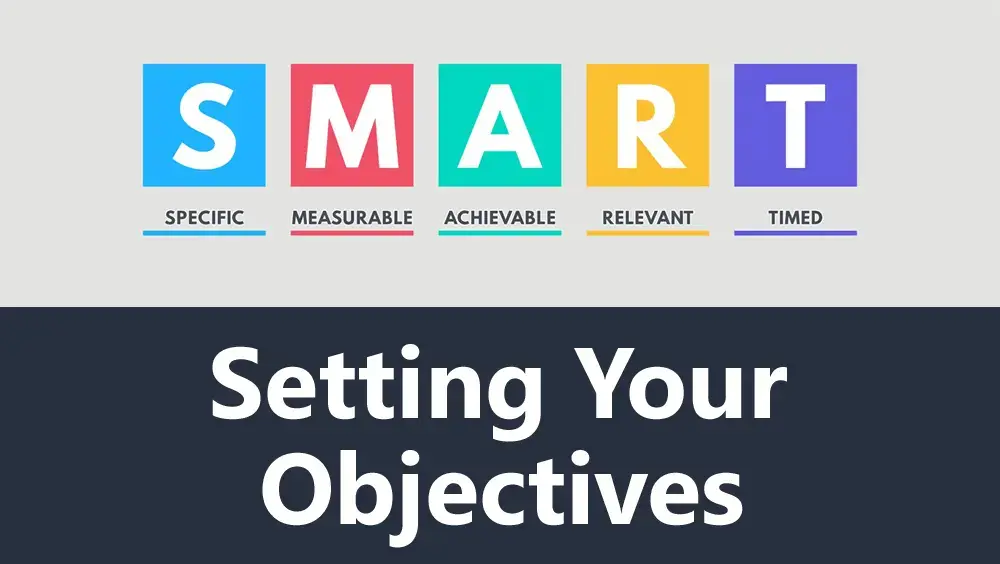
Determining the purpose of your video is crucial in creating a compelling script. What do you want your audience to take away from your video? Are you trying to sell a product, educate your audience, or entertain them?
Once you’ve identified the purpose of your video, set clear goals and objectives. For instance, if you’re creating a product video, your goal may be to increase sales by 20%. To achieve this goal, your objective may be to showcase the product’s unique features and benefits.
It’s essential to align your objectives with your audience’s needs. If your objective doesn’t meet your audience’s needs, your video will likely fall flat.
Structuring Your Video Script
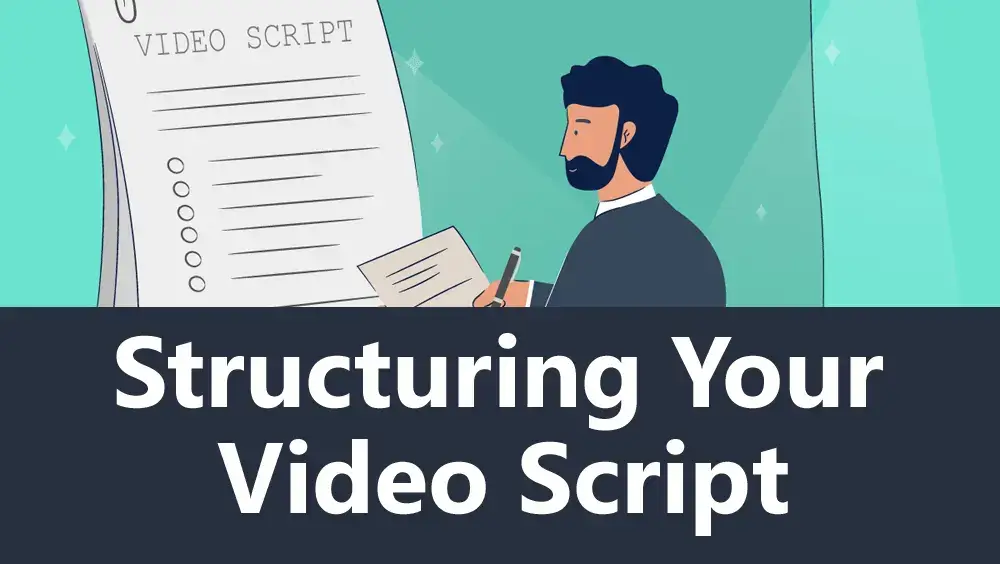
Now that you understand your audience and have set your objectives, it’s time to structure your video script. The MECE framework is an effective way to structure your video script in a way that’s clear and easy to follow.
MECE stands for Mutually Exclusive and Collectively Exhaustive, which means that your video should be broken down into segments that are distinct but cover everything your audience needs to know. Here’s how you can use the MECE framework to structure your video script:
1. Start with a strong opening that grabs your audience’s attention. This could be a surprising statistic, a thought-provoking question, or a captivating visual.
2. Develop a compelling narrative that flows logically and keeps your audience engaged. Your narrative should follow the MECE framework by breaking down your video into segments that cover distinct topics but collectively cover everything your audience needs to know.
3. End your video with a clear call-to-action that tells your audience what to do next. This could be subscribing to your channel, purchasing a product, or simply leaving a comment.
Let’s take a look at an example of the MECE framework in action. Suppose you’re creating a video that showcases a new skincare product. Here’s how you could structure your script:
Opening: “Did you know that 90% of women are unhappy with their skin? If you’re one of them, keep watching to learn about our new skincare product.”
Segment 1: Introduce the problem of unhappy skin and the challenges of finding the right product.
Segment 2: Introduce the new product and its unique features and benefits.
Segment 3: Demonstrate how the product works and the results it can achieve.
Segment 4: Share testimonials from satisfied customers who have used the product.
Closing: “Say goodbye to unhappy skin and hello to a brighter, smoother complexion. Click the link in the description to purchase our new skincare product today.”
By following the MECE framework, your video script is clear, easy to follow, and engaging for your audience.
Writing Engaging Dialogue

Now that you have a structured script, it’s time to write engaging dialogue. Your dialogue should be natural-sounding and persuasive, evoking emotion in your audience and compelling them to take action.
Crafting a natural-sounding dialogue begins with understanding your audience’s language and tone. If your audience is young and trendy, your dialogue may be more informal and conversational. On the other hand, if your audience is professional and serious, your dialogue may be more formal and authoritative.
Using persuasive language is also important in evoking emotion and compelling your audience to take action. For example, instead of saying “Try our product,” you could say “Transform your skin with our revolutionary product.” This type of language paints a picture of the benefits your product can provide and motivates your audience to take action.
Creating a clear call-to-action is essential in converting your audience into customers or subscribers. Your call-to-action should be concise and specific, telling your audience exactly what to do next. For instance, instead of saying “Check out our website,” you could say “Click the link in the description to visit our website and learn more.”
Incorporating Visual Elements

Visual aids play a critical role in creating an engaging video script. Choosing the right visuals to support your message can help reinforce your points and keep your audience interested.
If you’re creating a product video, visuals could include close-up shots of the product, before and after shots, and demonstrations of how the product works. If you’re creating an educational video, visuals could include infographics, charts, and animations to help simplify complex topics.
Using animation and graphics is another effective way to enhance engagement. Animated characters or graphics can help explain concepts in a fun and engaging way and make your video more memorable.
Editing and Revising Your Script

Once you’ve written your video script, it’s essential to edit and revise it for coherence and clarity. Review your script for spelling and grammar errors, and ensure that your dialogue flows naturally and is easy to understand.
Revising your dialogue to enhance engagement is also important. Read your dialogue aloud and make changes where necessary to make it sound more natural and persuasive. Remember to keep your audience’s language and tone in mind when revising your dialogue.
Best Practices for Video Scriptwriting
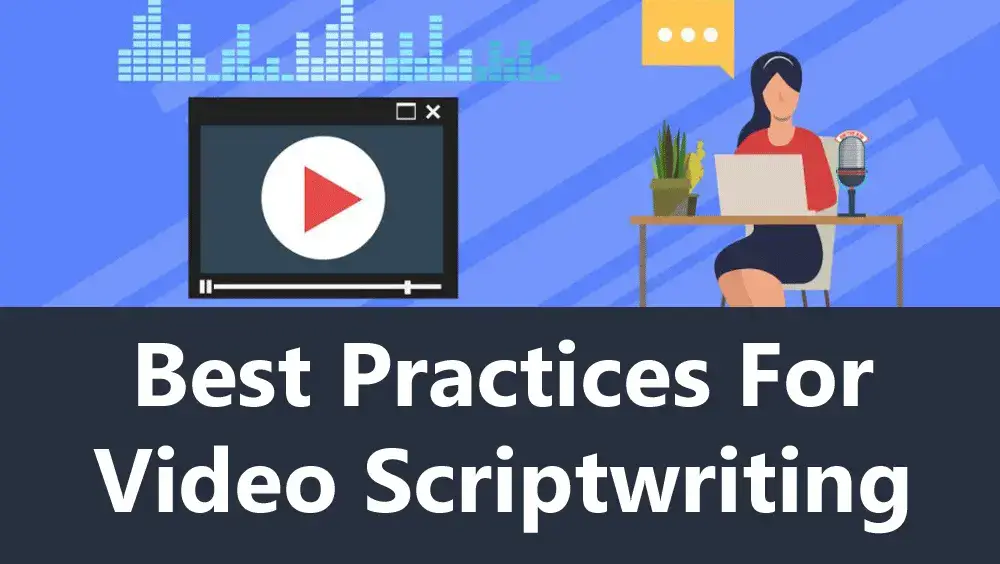
Here are some additional tips for crafting a captivating video script:
- Keep it simple and concise. Avoid using jargon or technical terms that your audience may not understand.
- Use storytelling to make your video more relatable and memorable.
- Incorporate humor where appropriate to keep your audience engaged.
- Use visuals to reinforce your message and make your video more interesting.
- Keep your call-to-action clear and specific to increase conversions.
Examples of Successful Video Scripts
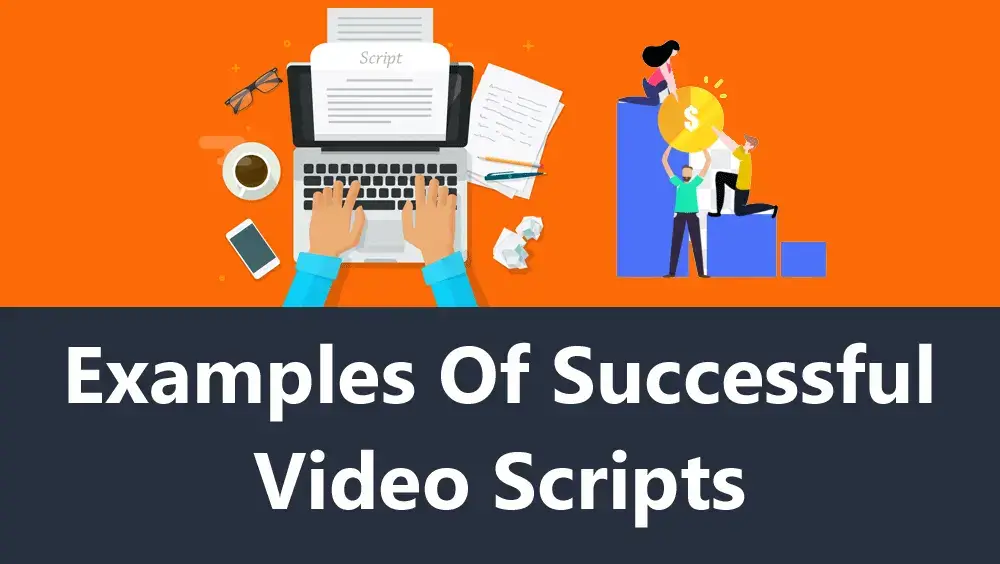
To give you an idea of what a successful video script looks like, here are some examples:
Dollar Shave Club: This viral video uses humor and storytelling to promote its subscription-based razor service. The video showcases the product’s unique features and benefits while keeping the audience entertained.
Apple: Apple’s “Introducing the iPhone” video uses sleek visuals and persuasive language to showcase the product’s features and benefits. The video is concise and to-the-point, making it easy for the audience to understand.
Nike: Nike’s “Dream Crazy” ad features former NFL quarterback Colin Kaepernick and uses powerful storytelling to inspire its audience. The ad showcases Nike’s brand values and reinforces its commitment to social justice.
By studying successful video scripts like these, you can learn how to incorporate humor, storytelling, and persuasive language into your own video script.
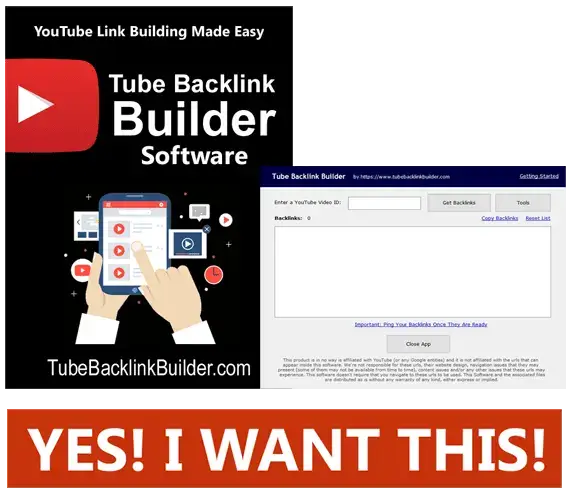
Crafting a captivating video script takes time and effort, but the results are well worth it. By understanding your audience, setting clear objectives, structuring your script, writing engaging dialogue, incorporating visual elements, and editing and revising your script, you can create a video that engages your audience and leaves a lasting impression.
Remember to keep your script simple, concise, and relatable. Use storytelling and humor where appropriate, and make your call-to-action clear and specific. By following these best practices, you can create a video that not only entertains but also motivates your audience to take action.

Crafting a Captivating Video Script: A Beginner’s Guide is an informative article that provides readers with a step-by-step guide on how to write a compelling video script.
Here are the main points covered in the article:
- Understanding Your Audience: This section emphasizes the importance of identifying your target audience and creating personas to understand their needs and interests. Analyzing your audience’s needs and interests helps you create a video that speaks directly to them.
- Setting Your Objectives: Determining the purpose of your video and setting clear goals and objectives is crucial in creating a compelling script. This section emphasizes the importance of aligning your objectives with your audience’s needs to create a video that resonates with them.
- Structuring Your Video Script: This section introduces the MECE framework for structuring your video script. The MECE framework helps you break down your video into segments that cover everything your audience needs to know in a clear and engaging way.
- Writing Engaging Dialogue: Crafting a natural-sounding dialogue that evokes emotion and includes a clear call-to-action is crucial in compelling your audience to take action. This section emphasizes the importance of using persuasive language that paints a picture of the benefits your product or service can provide.
- Incorporating Visual Elements: This section highlights the critical role that visual aids play in creating an engaging video script. Choosing the right visuals to support your message can help reinforce your points and keep your audience interested.
- Editing and Revising Your Script: Once you’ve written your video script, it’s essential to edit and revise it for coherence and clarity. This section emphasizes the importance of reviewing your script for spelling and grammar errors, ensuring that your dialogue flows naturally, and revising your dialogue to enhance engagement.
- Best Practices for Video Scriptwriting: This section provides readers with additional tips for crafting a captivating video script, including using storytelling to make your video more relatable, incorporating humor where appropriate, and keeping your call-to-action clear and specific.
- Examples of Successful Video Scripts: This section highlights successful video scripts like Dollar Shave Club’s viral video and Apple’s “Introducing the iPhone” video. Studying successful video scripts can help you learn how to incorporate humor, storytelling, and persuasive language into your own video script.
- Conclusion: This section recaps the main points covered in the article and emphasizes the importance of creating a video that engages your audience and leaves a lasting impression.
- FAQs: This section provides readers with answers to frequently asked questions about video scriptwriting, such as what a video script is, how long a video script should be, and how to measure the success of a video script.

Here is an action plan based on the information provided in the article “Crafting a Captivating Video Script: A Beginner’s Guide”:
1. Define your target audience: Before writing your video script, take some time to define your target audience. This involves identifying their interests, needs, and challenges.
2. Create personas: Once you’ve defined your target audience, create personas to better understand their motivations and goals. This will help you create a video that speaks directly to their needs.
3. Set clear objectives: Determine the purpose of your video and set clear goals and objectives. This will help you create a video that meets your audience’s needs and achieves your desired outcomes.
4. Structure your script using the MECE framework: The MECE framework helps you break down your video into segments that are clear and easy to follow. Use this framework to structure your video script for maximum engagement.
5. Write engaging dialogue: Craft a natural-sounding dialogue that evokes emotion and includes a clear call-to-action. Use persuasive language that paints a picture of the benefits your product or service can provide.
6. Incorporate visual aids: Choose the right visuals to support your message and make your video more interesting. Use animations and graphics to enhance engagement and reinforce your points.
7. Edit and revise your script: Review your script for spelling and grammar errors, ensure that your dialogue flows naturally, and revise your dialogue to enhance engagement.
8. Follow best practices: Use storytelling to make your video more relatable, incorporate humor where appropriate, and keep your call-to-action clear and specific.
9. Study successful video scripts: Study successful video scripts to learn how to incorporate humor, storytelling, and persuasive language into your own video script.
By following this action plan, you’ll be able to craft a captivating video script that engages your audience and leaves a lasting impression. Remember to keep your audience’s needs in mind and stay true to your objectives.

Here are 10 great frequently asked questions (FAQs) about video scriptwriting, along with their answers:
1. What is a video script?
A video script is a written document that outlines the dialogue, narration, and visual elements of a video. It serves as a guide for the production team and helps ensure that the video stays on message.
2. How long should a video script be?
The length of a video script depends on the type of video you’re creating and its purpose. Product videos are typically shorter, while educational videos may be longer.
3. How do I create a storyboard for my video script?
Creating a storyboard involves sketching out the visuals that will accompany your script. It helps you visualize your video and ensure that it flows smoothly. You can create a storyboard using paper and pencil or digital tools like Canva.
4. Can I write a video script without visual aids?
While visuals are an important part of video production, it’s possible to create a video script without them. However, you’ll need to ensure that your dialogue is engaging and paints a vivid picture for your audience.
5. How do I measure the success of my video script?
The success of your video script can be measured in various ways, including views, engagement, conversions, and feedback from your audience. Set clear goals and objectives before creating your video, and measure your success against those metrics.
6. What should I consider when choosing visuals for my video script?
When choosing visuals for your video script, consider your audience, your message, and the emotions you want to evoke. Use visuals that reinforce your message and make your video more interesting.
7. How do I ensure that my dialogue flows naturally?
To ensure that your dialogue flows naturally, read it aloud and make changes where necessary. Use conversational language and avoid technical terms or jargon that your audience may not understand.
8. How do I make my call-to-action clear and effective?
To make your call-to-action clear and effective, use concise language and tell your audience exactly what you want them to do. Use persuasive language that motivates your audience to take action.
9. How can I incorporate humor into my video script?
Incorporating humor into your video script can help keep your audience engaged and interested. Use humor that is appropriate for your audience and your message, and avoid jokes that may be offensive or insensitive.
10. How do I revise my video script to enhance engagement?
To revise your video script to enhance engagement, read it aloud and make changes where necessary. Use persuasive language that evokes emotion and includes a clear call-to-action. Incorporate visuals that reinforce your message and make your video more interesting.
Conclusion
In conclusion, writing a compelling video script that engages your audience is essential for creating a successful video. By following the steps outlined in this article, including understanding your audience, setting clear objectives, structuring your script using the MECE framework, writing engaging dialogue, incorporating visual elements, and editing and revising your script, you can create a video that resonates with your audience and achieves your desired outcomes.
Remember to keep your script simple, concise, and relatable. Use storytelling and humor where appropriate, and make your call-to-action clear and specific. Incorporating visuals that reinforce your message and make your video more interesting is also important.
By following best practices for video scriptwriting and studying successful video scripts, you can learn how to create a video that not only entertains but also motivates your audience to take action. Crafting a captivating video script takes time and effort, but the results are well worth it. So, start your journey towards creating a successful video today!




